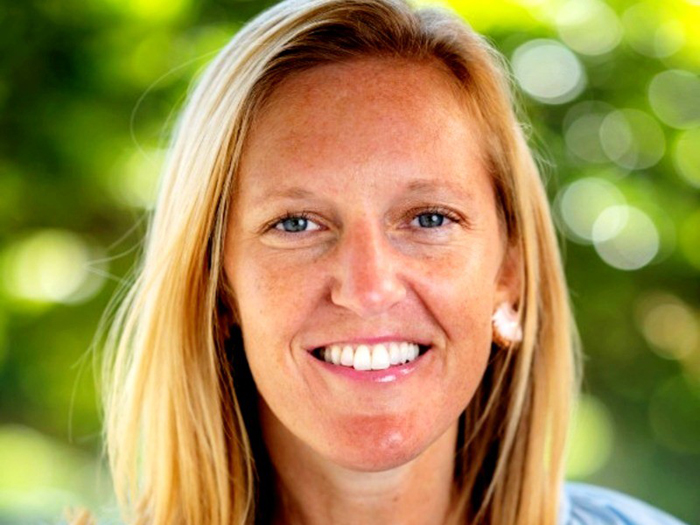Successful Partnerships
Surety Bond Assistance Fuels Growth

Federal and state laws mandate that a certain portion of most public works projects be given to small, minority-owned or female-owned contractors. There is little argument that such rules have a great benefit, both in supporting bootstrap businesses, and also in bringing increased talent and competition to contract bidding.
Federal and local laws also mandate that contractors post surety bonds, often to the full value of the contract. The intention is to protect taxpayer dollars and public infrastructure against shoddy work. Often, the two mandates conflict with each other, because even healthy small firms have cash flow constrictions that make posting a bond prohibitive.
While legislative solutions are sought, the interim solution is bond assistance, or subsidy. A few local brokerages around the country, notably one on each coast, have specialized in this field. Most recently, the San Francisco regional Bay Area Rapid Transit (BART) retained Merriwether & Williams, a pioneer in this niche market, to assist in a new round of contracts and bonding.
A completely separate firm, Surety Bond Associates of Bala Cynwyd, Pa., is active on the East Coast, and has been working with the Philadelphia Industrial Development Corp. for more than a year on an emerging-business capital assistance program.
“We are making final adjustments to the program, and hope to launch it in the second quarter,” said Ellen Neylan, president of Surety Bond Associates.
The national brokerages are not active in the business because it involves a lot of time and effort for a relatively modest return. The big firms laud the efforts, and are content to leave the business to the dedicated regional brokers.
“The bonding requirement is a huge hurdle for small and minority businesses,” said James E. Bridgeman, department manager of insurance for BART. He said that while the heavy burden on bidders’ cash flow and capital is the biggest challenge for them, there are others. “There is a formal bonding statement, accounting standards, and other requirements,” he said. Government entities and large contractors have the personnel and expertise to handle those on their own, but small businesses do not.
Bridgeman added that in meeting the inclusion goals of the contractor distribution laws, BART and other authorities also gain community involvement in local and regional public works. “Merriwether & Williams have held roundtables where prime contractors and subcontractors can sit down, get to know each other and the projects.”
“In these programs, our default is 0.2 percent, which is one-hundredth of the surety industry average of 20 percent.”
— Ingrid Merriwether, president and CEO, Merriwether & Williams
Question of Default
One major concern, especially with a bond assistance or subsidy program, could be default. But he noted the default percentage for contractors in such programs is quite small. “There is a real engagement by the brokerage, a real passion for this underwriting and assistance. They try to make default very difficult. Beyond underwriting guidance, they provide third-party fund administration and other support as part of their process, even beyond our contractor supervision,” said Bridgeman.
The BART commission comes 17 years after the first effort in bond assistance by Merriwether & Williams, said President and CEO Ingrid Merriwether. “We were handling OCIP for the San Francisco Airport Authority [SFO] when they asked us to help them with a $3 billion capital expansion project. They were having trouble meeting their Miller Act obligations. That is the federal law requiring a portion of the work be done by small, female- and minority-owned contractors. California and most states have similar laws.”
She said that SFO realized it would have to approach the problem in a new way, because this was a systemic challenge. The authority was willing to provide bonding subsidies to help otherwise capable contractors to qualify, but the process was complex. “Bonding is often an artificial barrier,” said Merriwether. “What is commonly called a subsidy or assistance is actually an investment. There are direct and quantifiable cost savings from having more bidders on a job, especially smaller contactors with less overhead.”
There is a symmetry to the concept. The idea of the bond is that the contractor puts capital at risk but once the job is done, that capital is returned and the contract paid. Similarly, in the surety assistance, the authority provides a subsidy, and gets it back when the bond is returned. The net gain is the lower cost of the project.
“We never arrange for more than 40 percent assistance,” said Merriwether, “that means the contractor is still responsible for 60 percent. The surety is enduring.” For the Miller Act, the federal threshold is $100,000, so that covers just about any public work. “After the SFO project,” she said, “the mayor of San Francisco realized bonding was a major issue throughout the city and county, and within two years there was a citywide bond assistance program.”
The BART commission represents the eighth such project for M&W in the past 17 years. According to Merriwether, “in that time, we have enabled $699.3 million in transactions, of which $207 million have been successful bidders.” The more important ratio is the default rate. “In these programs, our default is 0.2 percent which is one-hundredth of the surety industry average of 20 percent. That is testimonial proof that bonding is an artificial barrier,” she said.
Another client of M&W is the City of Los Angeles, specifically several of its “proprietary” or autonomous departments. Curtis Kelley is senior risk manager for the city administrator’s office. “The mayor’s office received numerous calls regarding the difficulties that small contractors were having securing surety. I did some research and learned about the program that the City and County of San Francisco had established,” he said. “I called Ingrid and spoke at length with her as well as officials in San Francisco. We decided to establish a similar program here.”
LA started its program under the auspices of the sewer construction and maintenance authority, simply as a good fit with municipal process. Eventually the program grew to include transit and transportation, airports and ports, and central city government.
“For just the City of LA, we have assisted on $156 million in surety or contract value, of which $62 million in contracts were awarded. And we have never had a default.”
— Curtis Kelley, senior risk manager, Los Angeles city administrator’s office
“Merriwether & Williams have great contacts among prime and subcontractors,” said Kelley. “They go through their own underwriting process with the potential bidders on a contract. They determine which surety would be the best fit, then they go to the market with our guarantee. That is the smaller of either 40 percent of the value of the contract, or $250,000.”
Kelley stressed that the bonding underwriters still go through their own underwriting as they would if the contractors had come to them separately. The double underwriting seems to work: “For just the City of LA, we have assisted on $156 million in surety or contract value, of which $62 million in contracts were awarded. And we have never had a default. The savings came to $3 million. This approach has a real payback.”
Growing Program
Kelley expects the program to expand. “We have used the program for a new terminal at LAX, for wastewater projects, but the ports are probably going to be our biggest expansion in the program,” he said. “This is not just piddly little contracts; they have a huge impact for the city and for the people of LA.”
Merriwether also speaks in terms of “the double bottom line,” doing well by doing good. “We are a small, woman-owned firm, so this is our cohort. We can relate,” she said. “This is important work, and as far as I know we are the only firm in the State of California engaged in it. In the past few requests-for-proposal, we were told that we were the only firm to respond.”
Government officials agreed. “The biggest challenge in our latest program was not getting approvals, it was the lack of competition for the contract,” said BART’s Bridgeman. “We have worked with Merriwether & Williams before as operations broker and also as a team member on construction projects.”
Bridgeman added that the hope of the brokers and of the city is that some of the repeat contractors taking advantage of the bond assistance will be able to build a track record and grow to the point where they no longer need the program.
M&W has several offices around California, and there is plenty of business. Said Merriwether, “We have a big back yard.” She is hopeful about legislative solutions, and M&W has other lines of work, but she expects to be at this for many more years.
“There are constantly efforts around the country to change bonding requirements because this is a real problem for governments at all levels,” said Merriwether. “The availability, or lack, of surety credit has a very big impact on public works everywhere. Surety bonds don’t exist in an abstract public-policy realm. They affect city and county budgets, local and regional economic development and infrastructure.”











